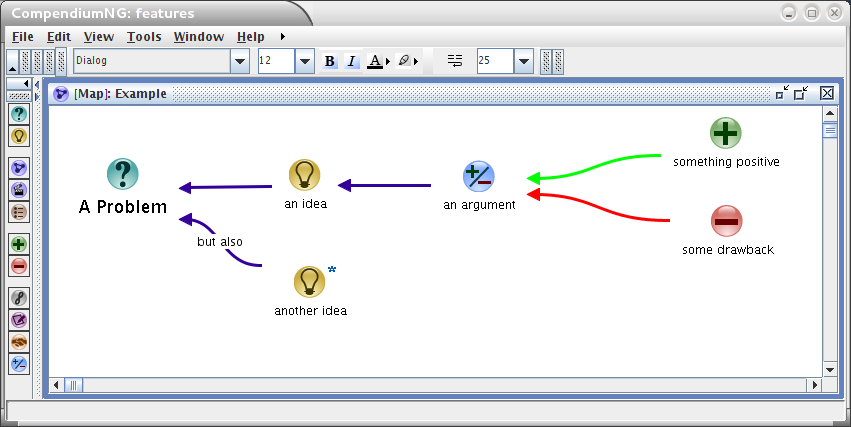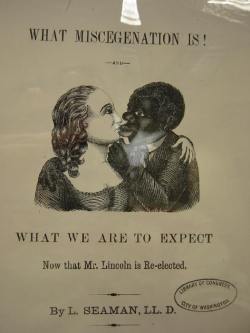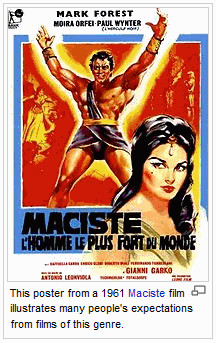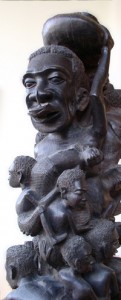 The corporation-dominated Global Education Reform Movement, which renowned Finnish educator Pasi Sahlberg aptly points out has spread much like the GERM it spells, is a big-money backed movement to dismantle public education for exploitation by for-profit special interests. It is an effort showing clear signs of failure on the education side of its mandate, one that’s especially interested in profit—where the GERM’s success is far more readily observable.
The corporation-dominated Global Education Reform Movement, which renowned Finnish educator Pasi Sahlberg aptly points out has spread much like the GERM it spells, is a big-money backed movement to dismantle public education for exploitation by for-profit special interests. It is an effort showing clear signs of failure on the education side of its mandate, one that’s especially interested in profit—where the GERM’s success is far more readily observable.
When the private exploits the public
The private depends on the public (Lakoff, 2014). When you research and develop something on the tax payers’ dime its rightful place is the public sphere. When Americans privatize their public education system, they turn it over to Wall St speculators, ultimately the same folks who gave us sub-prime mortgages, austerity, triple-dip recessions, worldwide economic failure, and the shakedown of the Greeks. The link isn’t hyperbole or a vivid imagination. It’s calculated and methodical (see for example Horn, 2009, “heavyweight teams”).
Further insight can be gleaned from a famous book out of Harvard Business School, alma mater to many of the architects of economic meltdown, entitled Disrupting Class: How Disruptive Innovation Will Change the Way the World Learns (Clayton Christensen, Curtis W. Johnson, Michael Horn, 2008), a book that can be thought of as part of the blueprint or ‘master plan’ to privatize schools. It was first presented to me by a manager, a “director” of information technology who was apparently quite impressed by the book’s “disruptive” revelations, touted on the unabashedly commercial outside jacket as certain to make the reader rethink “everything you thought you knew about learning.”
The promised epiphany turns out to be fellow Harvard man Howard Gardner’s 1981 “Multiple Intelligences” theory and a truism we learned my first day of my first class at teachers’ college in the early 90s. By now it’s an outright cliché within the teaching community that we should be the “guide on the side, not the sage on the stage.”
What other revolutionary new ideas about pedagogy and learning does the business school offer? The authors tell us students need to be motivated “intrinsically.” One hopes the disruptive innovation franchise at Harvard doesn’t believe no one published about that before 2008. However the book, in a feint designed for its target audience of venture capitalists, managers and IT directors, not educators who know the history of these things, discusses intrinsic motivation and experiential learning without mentioning John Dewey (1938), and with barely a nod to Noah Webster’s and Horace Mann’s later influence on American education, nor the important role they cast it in preserving democracy and defining the nation’s moral character.
The suggestion of bias in these omissions and distortions is only reinforced by the ahistorical presentation of Thomas Jefferson’s position on public education, accompanied by right wing talking points that evoke Frank Luntz or Rush Limbaugh.
Christensen, Johnson and Horn misrepresent Thomas Jefferson’s record and opinion on public education (2008, pp 52-3). They carefully include the famous Jeffersonian provision as governor of Virginia, which was, essentially, to groom a benevolent aristocracy or perhaps a sort of super-culture, nowhere emphasizing for their readers that this, too, was fully intended to be at public expense. Jefferson’s vision for funding, from grammar school to college, was in fact to be split between the public and private sectors, families, and communities, often much in ways that have actually come to pass across the history of U.S education. Yet these carefully picked cherries are topped by the Luntzian reminder the word “education” isn’t in the constitution. Neither is the word “markets,” nor the phrase “supply side economics.” Oops! Can you imagine extending such talk radio logic to other areas of our lives?
…shall be paid by the Treasurer quarterly on warrant from the Auditors … on the public foundation… … as [Thomas Jefferson] explained in his Autobiography, “We thought that … a systematical plan of general education should be proposed, and I was requested to undertake it. I accordingly prepared three Bills for the Revisal, proposing three distinct grades of education, reaching all classes. 1. Elementary schools for all children generally, rich and poor. 2. Colleges for a middle degree of instruction, calculated for the common purposes of life, and such as would be desirable for all who were in easy circumstances. And 3d. an ultimate grade for teaching the sciences generally, and in their highest degree” (Ford, i, 66). Within a decade after the work of the Committee of Revisors was begun, TJ regarded the Bill for the More General Diffusion of Knowledge as the most important one in the Report (TJ to George Wythe, 13 Aug. 1786). The exalted declaration of purpose in the preamble remains one of the classic statements of the responsibility of the state in matters of education. But what was new and distinctively Jeffersonian in the Bill was not its advocacy of public education … what was new in the Bill and what stamped its author as a constructive statesman of far-seeing vision was the object of seeking out men of genius and virtue and of rendering them “by liberal education worthy to receive, and able to guard the sacred deposit of the rights and liberties of their fellow citizens.” This implied the establishment of a ruling élite that would promote public happiness by wisely forming and honestly administering the laws… it saw nothing dangerous or inimical to the liberties of the people in accepting and making use of such a natural aristocracy of virtue and talent; and its unique and revolutionary feature, never yet put into practice by any people, was that, in order to permit such a natural aristocracy to flourish freely, it would remove all economic, social, or other barriers that would interfere with nature’s distribution of genius or virtue. (See TJ’s account of this Bill in Notes on Virginia, Ford, iii, 251–5; see also R. J. Honeywell, Educational Work of Thomas Jefferson, Cambridge, Mass., 1931.)
—Footnotes: A Bill for the More General Diffusion of Knowledge,
© Princeton University Press.
All rights reserved.
Christensen, Johnson and Horn misrepresented a 325 year commitment to public education embedded in the U.S. Constitution (Dennis, 2000). They misrepresent the socially situated nature of learning itself by reducing education to a supply-chain in order to monetize it. They misrepresent the classroom by attempting to mold it to the image of their markets, where business provides a weak metaphor at best. Beth Goldberg, who had 20 years of experience running businesses before becoming a middle school mathematics teacher, observes employees are paid to listen to you, students are not. Employees are selected based upon a search and interview process. Teachers do not select their students. In business, an insubordinate employee is fired. An insubordinate student is merely one more challenge for a classroom teacher.
Christensen, Johnson and Horn also misrepresent the views of their Harvard colleague Howard Gardner.
What does Howard Gardner really say about schooling?
Much of Gardner’s method and the idea of learning styles have retained their traction over the decades, but the science had been widely criticized long before Christensen and company shifted their disruptive gaze from pharmaceuticals to the supply chain offered by education (Klein, 1997; Willingham, 2004). I’ve written here about what I believe may be Howard Gardner’s greater legacy, The Unschooled Mind (1992), where Gardner explained how he came to realize that “even the best students in the best schools do not understand” (p. 1).
By then the seven “intelligences” were already beginning to morph into five “minds,” introduced around the time of his (post-Peterson lectures) The Unschooled Mind: How Children Think and how Schools Should Teach (1995). “The first three,” says Gardner, “can be reduced to three words: depth, breadth and stretch” (1995/2011, pg. xxiv). The fourth and fifth minds Gardner feels are “…not cognitive in the traditional sense” (1995/2011, pg. xxiv). The Respectful Mind brings tolerance and acceptance, and the Ethical Mind, while he labels it (too rigidly, I think) “outside the ken of children.” Ethics, consensus and respect are not a large part of the Christensen curriculum; they devote far more words and paragraphs to the importance of separation, fiat and coercion, the so-called “power tools” of disruption (more to follow, even more here).
What can we learn from the disruptive innovation franchise?
The fact of the franchise’s ability to sell books does not negate the relevance and significance of disruptive innovation. What the books provide educators is the set of vocabulary and strategies — “power tools” — that identify a venture’s opponents—whether union, parent group, government, or competing investor—and by which corporate reformers, with cash to pad campaign coffers, can come to dominate policy making, tilt the rules in their favor, all in the pursuit of profit. It’s a must-read for educators critical of GERM’s tactics — a seat at the campfire in the enemy’s camp! I’ve written at greater length here about the divide and conquer tactics the business school offers entrepreneurs and lobbyists who face resistance, why such top down approaches actually make wicked problems worse, why consensus building is imperative, and how to do that.
Don’t You Dare Say “Disruptive” It’s the most pernicious cliché of our time […] Christensen has not tried to rein in the word’s inflation.2 On the contrary, he has been out-punditing the pundits, publishing book after book—each with many co-authors—in which disruption theory is brought to bear first on this sector, then on that one. In the past five years, he has homed in on the social institutions—schools, public-health organizations, and the halls of government itself—he deems ripe for disruption.—Judith Shulevitz, TNR
Setting aside more recent revelations to accept these authors’ definition of “results,” which overlooks the lengths to which some private ventures screen and cull their student body to enhance those results, there are examples offered of charter schools and other “innovative” (i.e., “not publicly funded”) programs (or questionable practices) that resulted in higher test scores and other measurables presented as positives. But in the end of the book students sit connected to terminals—not peers and mentors—interacting with commercially provided software the book’s readers are enticed to develop and provide. In the seven years since the book was published blended learning, with varied amounts of teacher direction and highest student to student interactivity, has emerged as a much more powerful model, a fact that was already being observed and predicted by education researchers at Harvard’s Graduate School of Education and elsewhere, even as the business school published its free market vision.
Contrast this to the way the word “innovation” is used by a successful community outreach group, the Logan Square Neighborhood Association, highlighted by Harvard’s Graduate School of Education, where their primary business is teaching and learning, not profit-making (Warren et al., 2009).
The ideas espoused in Disrupting Class led to corruption and many say away from democracy. More than 15 years of rhetoric that fetishized markets while denigrating and undermining the public system in a manner (approaching libel, or slander, perhaps?) have taken a heavy toll.
This era has not been good for students; nearly a quarter live in poverty, and fully 51% live in low-income families. This era has not been good for teachers, who feel disrespected and demeaned by governors, legislatures, and the U.S. Department of Education. This era has not been good for parents, who see their local public schools lose resources to charter schools and see their children subjected to endless, intensive testing.—Diane Ravitch
Is there a vaccine or treatment against the GERM?
The GERM adapts quickly to regional and international differences, and spreads across stock markets. Some in the U.S. are developing a natural resistance to specific strains affecting their local situations. Because they present many of the same symptoms, such as PARCC testing, unfair rent and resource allocation practices, cheating scandals and segregation an agile and versatile response is indicated.
Community schools must once again serve their communities, and become hubs of community-strengthening activity and 24/7 access to public knowledge. Mark Warren and his team at Harvard Graduate School of Education urge us to look beyond bake sales and to adopt “a community-based relational approach to parent engagement in schools.” See their 3 case studies that demonstrate ways this can be done without bias of privilege and redirection of financial advantages toward a single sector.
Our teachers’ best qualities—their sense of humor, their love for the subject, their excitement, their interest in students as individuals—are not being honored or valued, because those qualities aren’t measurable.—Tim Callahan, spokesman, Professional Association of Georgia Educators
Students must continue and expand their efforts, and teach their parents that standardized testing reduces learning time. They are not assessments of students’ mastery of a subject. Students and their parents should join the grassroots Opt-Out Movement growing rapidly in nearly every state, wherever people witness the terrifying results of the GERM experiment on their own kids’ classrooms.
Educators mustn’t look for “IT directors” but should look instead for “idea facilitators” and local experts to collaborate with on inquiries and projects. We must draw upon proven learner-centred success stories, as they did at the Harvard GSE, and mostly ignore Harvard’s BS. #KidsCanCode and #HourOfCode activities of all sorts can help kids and their teachers alike develop 21st century literacies, demystify the software, and help to level playing fields.
Design Thinking, as it influences teaching and learning today, can trace at least part of its lineage to some of the earliest research into technology-enhanced learning, the advent of ethnographic applications in the field of learning, apprenticeship studies, situated and experiential learning, and communities of practice. Those aware of at least one school of design thinking, influenced by the “wicked problems” praxis of Horst Rittel and Melvin Webber (1973; see also Why Horst Rittel Matters), value consensus as a principle of design, and have developed tools, techniques, and frameworks to achieve consensus. We’ve been slow to adopt them.
We all agree that social media and “hyperspace” have permanently disrupted our capabilities and our horizons. We agree there’s a need to nurture different competencies, and that has led may to deduce a role for new literacies. If we believe in Critical Thinking and Collaboration, then let “Consensus-building” join the list of 21st century competencies.
If you self-identify as an “instructional designer,” take a moment to consider Gráinne Conole’s important distinction between ID and Learning Design (LD), which is seen “…as a more encompassing term than Instructional Design, … is pedagogically effective and makes appropriate use of technologies. … Learning Design provides a holistic approach to the design process” (2014). Orchestrate for serendipity… design learning experiences that involve participants in ways that permit for human chemistry to create meaningful bonds with the fruits of their inquiries and projects, that are engaging because they’ve been built on the participants’ own personal stories, and because they provide a safe space and expert support for their telling.
We must command our own set of “power tools.” Use plain language and transparent strategies, engage parents and the community along with our students, and all the while make sure the situation — the learning environment, beginning with the learners (who at any given moment may also be the teachers!) — drives the selection and employment of the tools.
† Although it retains some bibliography, links and images, and perhaps a sentence here and there, this post is for all practical purposes a complete re-write of an older post with the same title, and is meant to entirely replace and supplant the earlier version.
§
Further reading
Christensen, Clayton; Johnson, Curtis W.; and Horn, Michael B. (2008) Disrupting Class: How Disruptive I nnovation Will Change the Way the World Learns New York : McGraw-Hill [HTML]
Dennis, Russell (2000) The Role of the Federal Government In Public Education In the United States, web site, Bucknell University [HTML]
Fouchaux (2009) graduate school paper, Disrupting Disruption, HTML
Gardner, H. (1983/2003). Frames of mind. The theory of multiple intelligences. New York: BasicBooks.
Horn, Michael (blog post: Oct 30, 2009) The power of a heavyweight team to rethink education: A quest to learn, retrieved 2009-12-06 http://disruptingclass.mhprofessional.com/apps/ab/2 009/10/30/the-power-of-a-heavyweight-team-to-rethink-education-a-quest-to-learn
Klein, Perry D. (1997) Multiplying the Problems of Intelligence by Eight: A Critique of Gardner’s Theory, Canadian Journal of Education / Revue canadienne de l’éducation, Vol. 22, No. 4 (Autumn, 1997), pp. 377-394.
Lakoff, George (2014) The ALL NEW Don’t Think of an Elephant! Know Your Values and Frame the Debate, Chelsea Green Publishing, 192 pages
Rittel, Horst W. J. and Webber, Melvin M. (1973), Dilemmas in a General Theory of Planning, Policy Sciences 4 (1973), 155-169. [PDF]
Warren, Mark R., Soo Hong, Carolyn Leung Rubin, Phitsamay Sychitkokhong Uy (2009), Beyond the Bake Sale: A Community- Based Relational Approach to Parent Engagement in Schools, Teachers College Record, Volume 111, Number 9, September 2009, pp. 2209–2254, http://bit.ly/nYwbjK (PDF), Accessed March 17, 2013.
The Boston Herald (Wednesday, February 27, 2013) Elizabeth Warren clocks big Ben, Hits Bernanke on bank subsidies http://bostonherald.com/business/business_markets/2013/02/elizabeth_warren_clocks_big_ben
The Knowledge Exchange (Published: September 27, 2012) How could I miss that? Jamie Dimon on the hot seat, by Max Bazerman, Jesse Isidor Straus Professor of Business Administration, Harvard Business School, http://www.sas.com/knowledge-exchange/risk/integrated-risk/how-could-i-miss-that-jamie-dimon-on-the-hot-seat/index.html
Sahlberg, Pasi (2012) Finnish Lessons: What can the world learn from educational change in Finland, NY: Teachers College Press, Columbia University.
Shulevitz, Judith (2013) Don’t You Dare Say “Disruptive” It’s the most pernicious cliché of our time,blog post at The New Republic [HTML]
“Willingham, Daniel T. (2004), Reframing the Mind: Howard Gardner and the theory of multiple intelligences, Education Next, Vol. 4, No. 3 http://educationnext.org/reframing-the-mind/ retrieved 2012-10-10.



 As
As 
 Educators, business people, and many others in potential leadership roles are for the most part quite familiar by now with the assertion that it is important their classrooms, businesses, and organizations are representative of the communities they serve. This can be reflected in many ways, for but a couple of examples, in the pictures they hang or the people they hire. But the apparent simplicity of such a description of problem and solution falls away quickly when one contemplates even the simplest scenario. Let’s say I’m a teacher and I know I have black students in my class, and I wish to display photographs representative of the “black community.” Shall I hang a picture of Barack Obama? …Nelson Mandela? … Michaëlle Jean? …Michelle Obama? …Sean Combs? All are black, but what does each “represent?” And what possible justification could I have for assuming they represent the same things to my students as they do to me, or that they represent anything at all?
Educators, business people, and many others in potential leadership roles are for the most part quite familiar by now with the assertion that it is important their classrooms, businesses, and organizations are representative of the communities they serve. This can be reflected in many ways, for but a couple of examples, in the pictures they hang or the people they hire. But the apparent simplicity of such a description of problem and solution falls away quickly when one contemplates even the simplest scenario. Let’s say I’m a teacher and I know I have black students in my class, and I wish to display photographs representative of the “black community.” Shall I hang a picture of Barack Obama? …Nelson Mandela? … Michaëlle Jean? …Michelle Obama? …Sean Combs? All are black, but what does each “represent?” And what possible justification could I have for assuming they represent the same things to my students as they do to me, or that they represent anything at all? What is representation?
What is representation? The subject is a web of tensions and release, and just as “discourse structures the possibilities for thinking and acting” thinking and acting shapes the discourse. Thus, culture is deemed to be elusive, “…emergent, both product and process” (Yon, 1999, p. 626). Representation, then, can be seen not only as a marker of “social hermeneutics” used by those attempting to read a particular culture from the outside, but also as a tool by those within (or in proximity to) a culture to define and partition the boundaries of the culture, to decode the relationships of themselves and others to the culture (e.g., membership), and similarly to encode or declare their own relationship to a culture (Hall, 1997; 2007). We must, to quote Hall (1997), quoting Richard Hoggart (1958) “…try to see beyond the habits to what the habits stand for, to see through the statements to what the statements really mean…” (Hall, 1997, p. 43).
The subject is a web of tensions and release, and just as “discourse structures the possibilities for thinking and acting” thinking and acting shapes the discourse. Thus, culture is deemed to be elusive, “…emergent, both product and process” (Yon, 1999, p. 626). Representation, then, can be seen not only as a marker of “social hermeneutics” used by those attempting to read a particular culture from the outside, but also as a tool by those within (or in proximity to) a culture to define and partition the boundaries of the culture, to decode the relationships of themselves and others to the culture (e.g., membership), and similarly to encode or declare their own relationship to a culture (Hall, 1997; 2007). We must, to quote Hall (1997), quoting Richard Hoggart (1958) “…try to see beyond the habits to what the habits stand for, to see through the statements to what the statements really mean…” (Hall, 1997, p. 43). What about race?
What about race?